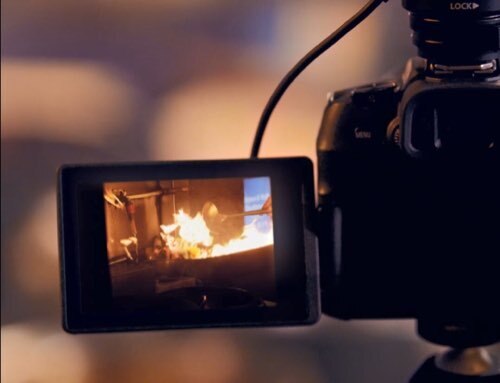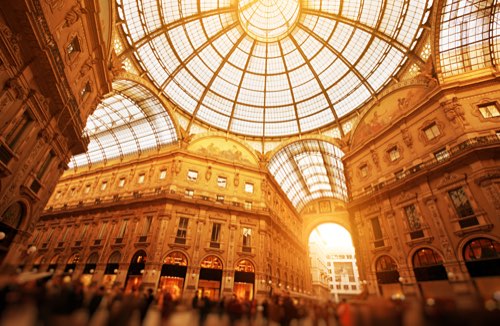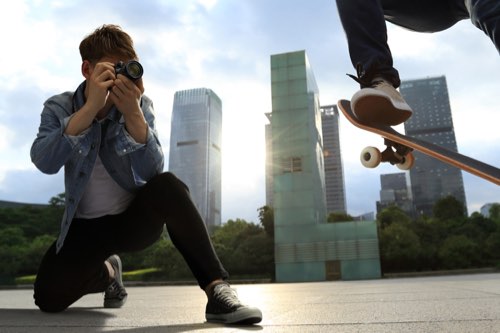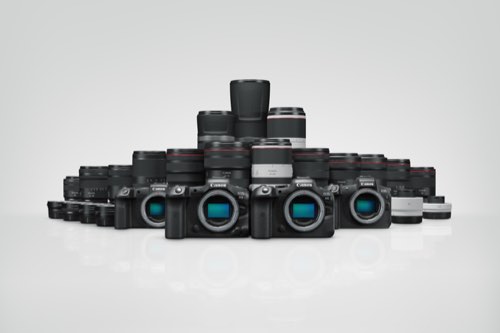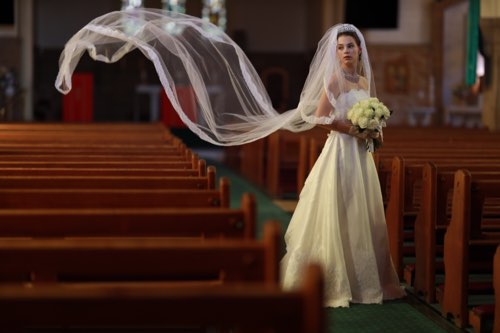An f/2.8 zoom lens lets you use an f/2.8 aperture setting even when you’re zoomed all the way in, which offers tons of flexibility. You get more freedom over your settings in low light, it’s easier to get beautiful bokeh, and you can change your framing quickly just by turning the zoom ring. This is especially useful for genres like landscape photography where photographers often face limitations on shooting positions.
In this 4-part series, we share some ideas for taking full advantage of what your f/2.8 constant aperture zoom lens can do, as well as tips for fine-tuning them to get a better shot. Because why do what a normal variable aperture zoom lens can do when your f/2.8 zoom is capable of more? (Reported by: Chikako Yagi, Digital Camera Magazine)

This is Part 1 of a 4-part series. Click on the links to read the other parts!
- Part 2: Creating Depth & Dimensionality
- Part 3: Try Astrophotography
- Part 4: Up Your Low Light Landscape Photography Game
Make your subject stand out: The principles of bokeh
One thing that f/2.8 constant aperture zoom lenses like the RF24-70mm f/2.8L IS USM and RF28-70mm f/2.8 IS STM are good at is creating bokeh, most often seen as a beautiful buttery background blur. The blurrier the background, the more the subject will stand out to the viewer—almost like it has a spotlight shining on it! This effect is also described as “subject-background separation”.

EOS R5/ RF24-70mm f/2.8L IS USM/ FL: 70mm/ Aperture-priority AE (f/2.8, 1/100 sec, EV-1.0)/ ISO 100/ WB: Auto
A clear, obvious subject is the basic requirement for a good composition. The beauty of f/2.8 zoom lenses is that they can blur out the background significantly regardless of the focal length you use. Blurring out the background simplifies unwanted details that distract the viewers from the subject (“distractions”). That might even be a big reason you decided to get an f/2.8 zoom lens in the first place!
Pro tip: Zoom all the way in and move closer to the subject
If the background isn’t blurred out enough, zoom all the way in and move the lens as close to the subject as you can. This should give you the maximum bokeh!
Key concept: 4 factors for better bokeh
Factor 1: Use the maximum aperture

EOS R5 Mark II/ RF24-70mm f/2.8L IS USM/ FL: 70mm/ Aperture-priority AE (f/2.8, 1/1600 sec, EV+0.7)/ ISO 100/ WB: Auto

f/2.8

f/4

f/5.6
Shooting at the lens’ widest aperture (smallest f-number setting) results in a shallower depth of field, which contributes to a background that is more blurred out. Since you can use f/2.8 at any focal length on your f/2.8 zoom lens, try it out as much as you can and see what you can achieve with it!
Pro tip: Know how to control what’s in focus
Sometimes, the shallow depth of field makes it hard to get your more of your subject in focus. Using a higher f-stop usually solves the issue. However, if keeping the same degree of blurring is important, consider adjusting your camera angle so the scene has less depth. A slight shift or tilt might be all it takes!
Also see:
Lens Basics #4: Deep Focus (Point 3)
Factor 2: Use a longer focal length

Shot at 200mm
EOS R5/ RF70-200mm f/2.8L IS USM/ FL: 200mm/ Aperture-priority AE (f/2.8, 1/320 sec, EV-1.3)/ ISO 100/ WB: Auto
Framing isn’t the only thing that changes when you turn the zoom ring! A longer focal length makes the bokeh in the background look bigger too: it does so by pulling the background closer (“compressing the scene”). The cool thing about f/2.8 zoom lenses is that you can zoom in and out just by turning the zoom ring, making it much easier to experiment and see how different focal lengths change the way the image is expressed.
Factor 3: Move closer to the subject

Approx. 10cm away

Approx. 20cm away
The further away the background is from the subject, the more blurred out it looks. When you move closer to the subject, the background becomes relatively further away (compared to the subject’s distance to you). If it’s not possible to physically move closer to the subject, zooming in has the same effect on background bokeh!
Factor 4: Make use of the distance between the subject and its foreground

EOS R5/ RF70-200mm f/2.8L IS USM/ FL: 100mm/ Aperture-priority AE (f/2.8, 1/640 sec, EV-0.7)/ ISO 100/ WB: Auto
Bokeh can be in front of the subject too! But regardless of whether it is in the foreground or the background, the further an object is from an in-focus subject, the more blurred out it will look.

Recap: How to get more blurred-out bokeh
- Use the widest aperture setting: f/2.8!
- Zoom in as much as possible.
- Move closer to the subject.
An f/2.8 zoom lens lets you use f/2.8 no matter how much you zoom, so you can compose the image the way you want without compromising on the bokeh!
Further reading/ related techniques:
- How to Increase Depth-of-Field While Shooting Wide Open?
- How Do I Effectively Use Foreground Bokeh on a Telephoto Lens?
- 4 Easy Steps to Capture Those Elusive Bokeh Circles!
Recommended f/2.8 zoom lenses
f/2.8L trinity

If you plan to invest in the best f/2.8 zoom lens available, these professional-grade L-series lenses offer a robust build with the best possible optical quality. They are the choice of many users who shoot for a living.
- RF15-35mm f/2.8L IS USM
- RF24-70mm f/2.8L IS USM
- RF70-200mm f/2.8L IS USM

These lenses are smaller, lighter, and designed to be more affordable to more people. They are also dust- and drip-resistant, though to a different degree compared to the L-lenses.
- RF16-28mm f/2.8 IS STM
- RF28-70mm f/2.8 IS STM
About the Author
A monthly magazine that believes that enjoyment of photography will increase the more one learns about camera functions. It delivers news on the latest cameras and features and regularly introduces various photography techniques.
Published by Impress Corporation
Chikako Yagi was twenty when she started teaching herself photography using a film SLR camera. She left regular employment to become a full-time landscape photographer in 2016. An apprentice of renowned photographers such as Kiyoshi Tatsuno and Tomotaro Ema, she is a member of the Shizensou Club, which was founded by the former and is one of Japan’s most famous landscape photographers’ clubs. In 2013, she was selected as one of the Top 10 Photographers of the Tokyo Camera Club.
www.chikakoyagi.com
Instagram: @chikako_yagi








